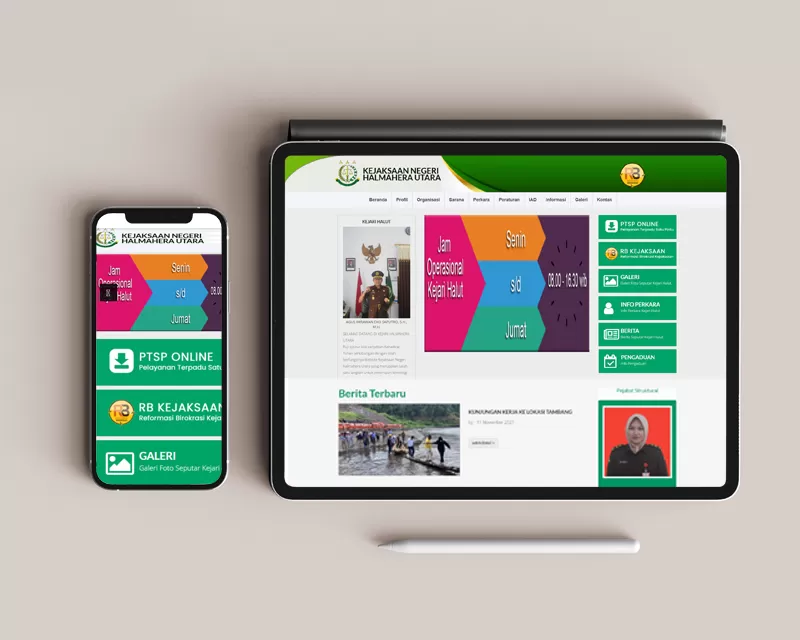6 Digital Marketing Trends to Watch in 2024

Heck yes, it’s that time of year again, when I make my new marketing predictions for 2024.
If you find this post helpful, I would appreciate any shares, since one of my goals for 2024 is more organic reach!
Thank you thank you in advance and now let’s get into it!
What we cover:
Trend #1: Optimizing for SGE and AI platforms
Trend #2: Diversifying beyond the publisher model
Trend #3: The Rise of Social Media SEO?
Trend #4: Email Marketing Becomes Popular Again
Trend #5: Personalization and good user experience will matter more than ever
Trend #6: More people will PAY for information they trust
Trend #1: Optimizing for SGE and AI platforms
Embracing the AI Era in Online Information Retrieval It’s an open secret: AI is set to revolutionize how we search and consume information online. Think about it – while we’re still Googling away (with Google holding a whopping 90% market share), the future might look quite different.
Imagine a future where we no longer use Google, and instead, we have personal AI assistants that curate and summarize information for us. Google is already onto this trend and has been experimenting with AI in search results for the past six months.
Introducing SGE: Google’s Latest Bet: You might be wondering, what’s SGE? SGE stands for Search Generative Experience. In a nutshell, SGE uses AI to answer your search queries right at the top of your search results, pulling from web content and providing citation links. And it’s not just text – we’re talking visual content like images and even YouTube videos in the responses as well.
Key Observation: Websites hit by the helpful content update seem less visible in SGE citations, but their images are still in the game. So, image optimization? Definitely a 2024 must-do.
SEO and Content Creation: The 2024 Game Plan Here’s where it gets interesting for SEOs and content creators. Our focus is shifting:
Mastering AI Snippets: As SGE goes mainstream, ranking in AI responses will be crucial.
Diversifying Content: We need to think beyond text. Short videos, long videos, forum discussions, web stories, images, news stories, trending topics, and concise niche expert blog posts – these are the new kings.
Visuals in SGE: A New Frontier And don’t overlook the power of visuals in SGE. Images and videos are not just included; they’re given prime real estate. My advice? If you’re not already pushing content on YouTube, now’s the time to start. And hey, I’ve got just the strategy for you in my new membership, “EXPAND.”
The Future of SEO: Less is More? As AI gets smarter, the traditional SEO playbook might need a rewrite. We could see a future where brand signals, topical authority, experience, expertise, content quality, and user intent overshadow keyword density and traditional SEO tactics. But hey, let’s not jump the gun – the SEO landscape is still settling.
CBO: The Next Big Thing in Digital Marketing? Finally, let’s talk about AI platforms like ChatGPT or Bard. As real-time information seekers possibly drift from Google to these platforms, a new field might emerge: Chat Bot Optimization (CBO). It’s all speculation now, but who knows? This might just be where the future of search is headed.
So, there you have it – a sneak peek into the future of digital marketing, where AI, visuals, and content diversity are set to play starring roles. Stay tuned, stay adaptable, and let’s ride this wave of change together.
Trend #2: Diversifying beyond the publisher model
The Decline of the Traditional Publisher Model Let’s face it: the traditional publisher model, which thrived on publishing vast amounts of free content and monetizing through display ads, sponsorships, and affiliate links, is facing a crisis. This approach has built empires over the last decade, but the advent of AI is reshaping the game.
AI’s Impact on the Display Ads Model The publisher model hinges on web traffic and ad views. But as AI begins delivering summarized answers directly, fewer people may visit the original websites, potentially crumbling this monetization strategy. Information alone, especially generic content, is losing its edge.
The Rise of ‘Samesies’ Content and Google’s Dilemma The internet is now inundated with AI-generated content, creating a sea of repetitive information. Google is grappling with distinguishing truly helpful content. Previously, content ranking strategies involved creating more in-depth content than competitors and using optimization tools like RankIQ or SurferSEO. However, these tactics are now being exploited at scale, leaving Google with the daunting task of sorting through thousands of similar contents.
Strategies to Stand Out from AI
Unique Value Proposition: Shift towards offering unique perspectives, first-person experiences, and exclusive data – elements AI cannot replicate.
Humanizing Content: Incorporate personal stories, videos, and images to distinguish from AI-generated content.
Building a Social Media Presence: Showcase your authenticity and expertise beyond being just a content provider.
Becoming a Source, Not a Regurgitator: Transition from merely sharing information to offering original insights and solutions.
Recipe Bloggers: A Unique Position Recipe bloggers might be less affected due to the personal and experiential nature of cooking, where trust and familiarity play significant roles.
Building a Brand Beyond Content The emphasis shifts to developing a brand that resonates and offers tangible value beyond what AI can provide. Questions to ponder include:
Brand Appeal: Is your content compelling enough to be shared enthusiastically?
Brand Pride: Would you proudly represent your brand in the real world?
Value and Problem-Solving: What unique solutions are you providing that AI cannot?
My EXPAND Membership to Aid Transition For those seeking guidance, my EXPAND membership offers tools and exercises to pivot from a content-focused approach to a robust brand strategy. This includes a custom chatGPT bot, available to members with ChatGPT Plus accounts.
The Impending Threat of Third-Party Cookie Loss Another challenge is the phasing out of third-party cookies in 2024, which could reduce the effectiveness of targeted advertising and, consequently, ad revenues.
Adapting to First-Party Cookies and Ad Network Initiatives While third-party cookies are on their way out, first-party cookies remain. Brands with robust user data can still deliver targeted ads. Ad networks like Mediavine and Raptive (formerly AdThrive) are developing tools to mitigate the impact, such as “Grow” and “Slickstream,” which aid in accumulating first-party data.
Diversification and Traffic Source Expansion It’s critical to diversify traffic sources. For bloggers, avenues like YouTube and Pinterest offer new traffic streams. Social media platforms like TikTok, Instagram, and YouTube shorts are ideal for building trust and authority, while LinkedIn suits B2B spaces.
The Changing Blogger Landscape in 2024 Many bloggers might exit the scene in 2024 due to reduced traffic and earnings. However, there’s still value in evergreen content for organic discovery and expertise demonstration.
Refining SEO Strategies
Targeting Long-Tail Queries: Focus on queries that align closely with your customer’s needs, even with low search volumes.
Building a Recognizable Brand: Cultivate an online presence that garners genuine discussions and shares.
Purging Low-Quality Content: Enhance the user experience by retaining only high-quality, relevant content.
Leveraging Google’s Personalized Search: Encourage repeated visits to your content for better search visibility.
In summary, the landscape for content creators and publishers is rapidly evolving. It’s time to embrace advanced marketing and brand-building strategies to stay ahead in this changing digital world.
Trend #3: The Rise of Social Media SEO?
Blending Social Media and SEO: A Revolutionary Concept Here’s something that’s been brewing in my mind: the potential rise of social media SEO. With social media content like TikTok videos, Instagram Reels, and YouTube Shorts increasingly appearing in Google’s organic search results, we’re looking at a colossal, yet largely untapped opportunity. It’s about mastering the art of getting social media content to rank in search engines – a fresh and uncharted territory.
The Untapped Potential of Social Media SEO Unlike the well-established realm of blogging SEO, social media SEO is relatively new and lacks a clear leader. Current SEO tools haven’t caught up with this trend yet. For instance, they don’t track the appearance of short-form content in search engine results pages (SERPs). I’ve suggested this feature to Semrush, but adapting their tools to accommodate this change is no small feat.
SEO and Short-Form Content: A Powerful Combo The beauty of this trend is that it introduces an evergreen aspect to short-form videos, a feature they traditionally lacked. This makes them even more valuable for brands as a long-term discovery tool. However, the challenge lies in identifying whether short-form videos appear for specific searches, as this is highly dependent on the niche and query.
Strategies for Optimizing Social Media SEO
Targeted Content Creation: Before creating SEO-optimized social media content, it’s crucial to research and confirm if short-form videos show up for your target keywords. This ensures your efforts are focused and effective.
Analyzing Ranking Factors: Once you identify that short-form content does appear in search results for your chosen keywords, analyze the ranking social media videos. Investigate the elements contributing to their ranking – be it exact-match keywords in captions, text, audio, hashtags, or overall search intent.
Replication and Experimentation: Try to replicate the successful elements in your content and continually refine your approach based on results.
The Future of Social Media SEO This field is ripe for growth as more social media creators realize the potential of reaching audiences through Google, not just on the platforms themselves. The key to this evolution will be enhanced analytics tools from social media companies, providing insights into where video traffic originates. This data will be crucial for content creators to understand what’s working and to focus their efforts accordingly.
In summary, social media SEO represents a significant and exciting new market in digital marketing. It’s about harnessing the power of SEO to elevate the reach and impact of social media content, potentially changing the game for brands and creators alike.
Trend #4: Email Marketing Becomes Popular Again
The Undying Relevance of Email Marketing In the digital world, trends come and go, but email marketing remains a stalwart, consistently proving its worth. In my experience, it’s been the cornerstone of my brand, driving over a million dollars in sales. Yet, it seems that many who are growing their audience online have not fully grasped or invested in the power of an email list. This oversight is a significant liability.
The Unmatched Strength of Email Marketing The beauty of email marketing lies in its directness and personalization capabilities. Unlike other platforms, an email lands straight in the subscriber’s inbox, offering a personal touch based on their actions, interests, and history. It’s a level of engagement no other platform can match.
The Risks of Relying Solely on External Platforms Building your brand exclusively on external platforms is risky. A single algorithm update or platform change can drastically reduce your reach. An email list is your safety net, ensuring direct communication with your audience without relying on third-party algorithms.
Email Marketing: A Direct Line to Your Audience An email doesn’t just reach an inbox; it demands attention. Whether it’s opened immediately, saved for later, or deleted, your audience sees your name every time. This direct line is something social media and search engines can’t guarantee.
Preparing for the New Age of Privacy and Competition As privacy regulations tighten and competition for attention intensifies, a direct line to your audience becomes invaluable. I anticipate more marketers, especially the younger generation thriving on social media, to recognize and embrace the power of email marketing.
Social Media’s Evolution Mirroring Blogging The trajectory of social media is fascinatingly similar to blogging. Just as blogging transitioned from personal diaries to SEO-driven content machines, social media is also evolving from personal sharing spaces to more business-oriented platforms.
Leveraging Social Media for Email List Growth I’ve recently been harnessing Instagram to grow my email list, focusing on tangible ROI rather than vanity metrics. Tools like ManyChat have been instrumental, automating interactions to drive subscribers from social media to my email list.
The Rise of Cross-Promotion and Sponsorship Opportunities Cross-promoting email lists is becoming a trend, as seen with ConvertKit’s Creator Network. Additionally, the decline in third-party cookie effectiveness makes direct email list advertising more attractive for sponsorships, opening new revenue streams.
Upcoming Gmail Changes: A Call to Action for Email Marketers A crucial update for email marketers is Gmail’s new requirement for SPF, DKIM, and DMARC verification for domains sending over 5k emails a day. This change, coming in February 2024, is essential to avoid landing in spam folders. It’s vital to update your DNS records for continued success.
The Importance of Domain Authentication and Engagement When you switch to sending emails from your domain, it’s like starting from scratch in terms of sender reputation. It’s wise to initially target your most engaged subscribers to build a solid reputation before reaching out to the broader list.
Join My EXPAND Membership for Email Marketing Mastery For anyone seeking guidance in this ever-important field, my EXPAND membership offers comprehensive support, from setting up effective strategies to adapting to new email marketing challenges.
In conclusion, email marketing is not just surviving; it’s thriving. It’s essential for anyone serious about building a lasting, resilient online presence. The future of digital marketing sees email at its core, serving and selling to your audience in the most direct and personal way possible.
Trend #5: Personalization and good user experience will matter more than ever
The Era of Personalization and Enhanced User Experience The digital marketing landscape is increasingly tilting towards personalization and improved user experiences. As I’ve touched upon in my previous predictions, these elements will become even more crucial in 2024.
Google’s Personalization Initiatives Google is leading the charge in personalization, integrating this feature across its products. We’ve seen the introduction of Google Discover topic-following capabilities, “new for you” sections in search results, and personalized results prioritizing frequently visited websites for logged-in users.
Email Marketing: A Personalization Powerhouse Again, email marketing emerges as a frontrunner in the personalization race. By harnessing data from surveys, quizzes, and user behaviors, email marketers can tailor their messages to specific audience segments. For instance, segmenting an email list based on the business stage of the subscriber – from beginners to those running six-figure businesses – can significantly improve engagement and results. I plan to implement this in The Unconventional RD brand and will be sharing my strategies within the EXPAND membership.
The Importance of Segmenting and Customizing Email Content Segmentation and customization in email marketing are not just about sending different emails; they’re about providing relevant and valuable information that meets the specific needs of each segment.
Website User Experience: A Growing Priority Google’s emphasis on site speed, HTTPS, and non-intrusive pop-ups showcases its commitment to user experience. The “page experience” report in Google Search Console highlights the importance of mobile-friendly content, minimal ad interference, and easy navigation. Ensuring that ads and pop-ups on your site don’t detract from the user experience is becoming increasingly important.
Building a Brand-Driven Website Experience Your website should clearly articulate the value you provide right from the homepage. It’s about creating a helpful space for your target audience rather than just publishing random posts. Thinking like a brand and applying solid marketing principles on your site is key to success.
Learning to Build Engaging Websites In my “SEO Made Simple” course, I delve into creating high-quality homepages, about pages, and categories that resonate with your audience and align with your brand values.
Leveraging Tools for Website Personalization Tools like RightMessage offer the ability to personalize website messaging based on first-party data. For example, if you know a visitor is a private practice owner, you can tailor your website’s call-to-action to resonate specifically with them. Similarly, if a visitor has already opted into a particular lead magnet, your website can display relevant opt-ins or offers to further their customer journey.
My Plans for Super-Personalization While I haven’t yet explored tools like RightMessage, they’re on my radar for 2024. The potential to offer a highly personalized user experience on websites is an exciting prospect.
In conclusion, the future of digital marketing lies in personalization and a relentless focus on user experience. Whether through email marketing or website interactions, understanding and catering to the specific needs of your audience will be paramount. As these trends continue to evolve, they’ll undoubtedly open new avenues for connection and conversion in the digital space.
Trend #6: More people will PAY for information they trust
Navigating the Flood of Mediocre Content In an online world increasingly saturated with generic, mass-produced content, the value of trusted and high-quality information sources is soaring. As we navigate through this deluge of mediocrity, a significant shift is occurring: more and more people are willing to pay for access to information they trust. This emerging trend opens a promising avenue for content creators who offer unique, insightful content.
The Rise of Paid Subscriptions for Exclusive Content
Personal Experience with Paid Content: Like many others, I’ve found myself subscribing to paid memberships to access high-quality content. For instance, I’ve joined Marie Haynes’ membership for her expertise on AI and SEO. The exclusive insights and in-depth discussions behind her paywall provide value that I’m willing to pay for.
The Gated Content Model: Offering a free newsletter while gating some content for paying subscribers is a model that’s gaining traction. By positioning yourself as a thought leader in your niche, you can attract a segment of your audience willing to pay for your deeper insights and hard-earned expertise.
Simplifying Paid Content Delivery
Utilizing ConvertKit for Paid Newsletters: Setting up a paid subscription model doesn’t have to be complicated. ConvertKit, for example, allows content creators to accept payments directly for paid newsletters, simplifying the process significantly.
The Advantage of Specialized Content: In the age of AI, where general information is becoming commodified, there’s a growing demand for specialized knowledge. AI might be a jack-of-all-trades, but it lacks the depth and personal touch of a specialist. By establishing yourself as a trusted specialist, coach, mentor, or accountability partner, you can create a niche for yourself that thrives even in the AI era.
Baca juga:
Tips Digital Marketing 2024 — Strategi untuk Mencapai Sukses di Era Digital yang Berubah Cepat
Embracing the Era of Paid Information This trend toward paying for trusted information is a testament to the value of quality over quantity. As content creators, understanding and adapting to this shift is crucial. It’s about recognizing the worth of your unique insights and leveraging them in a way that resonates with those seeking deeper understanding and guidance.




